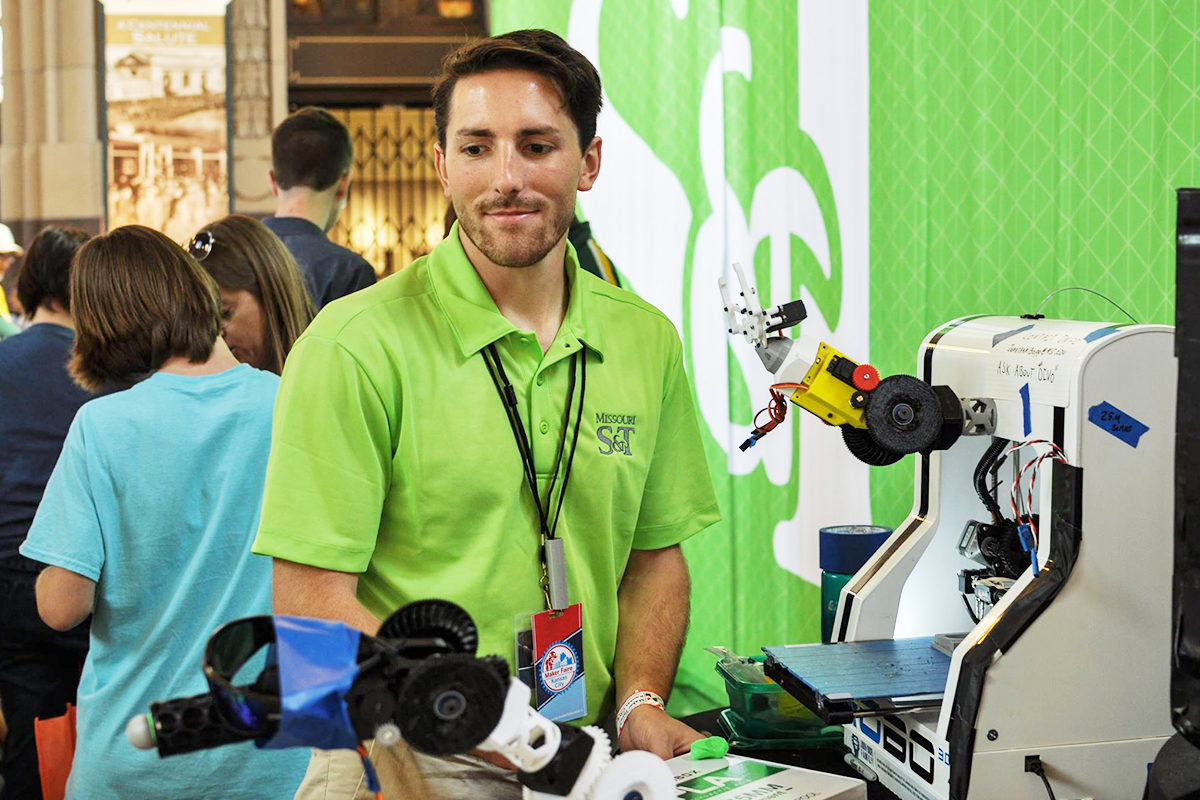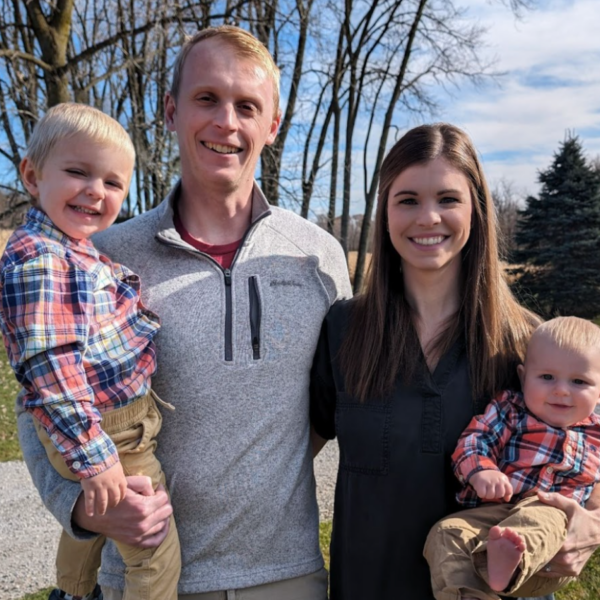Alumni Spotlight: Jonathan Bopp ’12
“There was a lot of love given to me at Westminster, and I see the work I’m currently doing as giving back—benefiting teachers like the ones who helped me to grow in my knowledge and passion for robotics.”
Westminster alumnus Jonathan Bopp ‘12 has a knack for problem-solving. And it’s this skill, coupled with his love for robotics, that has inspired him to establish a company with a heart for utilizing robotics to improve people’s lives. YRobotics was officially formed in January 2017 but had essentially been taking shape since Jonathan’s freshman year of high school.
Each school day, lunch period was for catching up with friends—and stopping by Mrs. Lisa Harding’s classroom to discuss science. Jonathan’s first year of high school was also Mrs. Harding’s first year at Westminster teaching upper school physics, a role she’s held for nearly 10 years now. “She was super nice and always made me feel welcome. We’d talk about all things science-related,” he says. During his sophomore year, lunchtime discussions with Mrs. Harding evolved into brainstorming ideas for a co-curricular club to welcome other Westminster students interested in engineering.
Not long afterward, JETS (Junior Engineering Technology Society) was born. Jonathan says the initiation of this club was one of the great things that happened while he was at Westminster. The club offered a landing place for other like-minded students to meet and pursue a collective interest in science, and for that, Jonathan says he’s grateful to Mrs. Harding for her effort in establishing the group. “She likes to say I helped, but I really just showed up!” he says.
It was in the midst of his junior year that Jonathan stopped by Mrs. Harding’s classroom one day to share a video he’d found about FIRST Robotics Competition. Could a program like this be implemented at Westminster? Exploring the possibility, initiating conversations, and researching funding options occupied the year ahead. Around Thanksgiving of his senior year, Mrs. Harding approached Jonathan with good news—funding was available to start Westminster’s own FIRST robotics team. Jonathan and his friends pioneered that first season of The Cyborg Cats–Team 4256, laying the foundation for a program that now boasts over 300 student participants and a successful competition record.
Following Westminster graduation, Jonathan attended Missouri University of Science and Technology to pursue a degree in mechanical engineering. The choice was essentially a no-brainer. “I’ve always liked engineering,” he says. “from the time I was 9 years old and interested in Legos! All through middle school, I was the kid who was constantly trying to build things and glue things together. It was in high school that my curiosity was really fostered and supported, and I was encouraged to investigate and understand the world.”
At Missouri S&T, opportunities abounded for Jonathan to join a robotics competition team at the collegiate level. Many well-established teams had appealing track records to offer, but with a history of helping build things from the ground up, Jonathan was interested in something different. “There was this one team that hadn’t competed yet. They had this mutilated RC car, and I just remember thinking, I want to join that team,” he says. The team was the Mars Rover Design Team.
The purpose of the team was to participate in an extracurricular competition where a group of students would design and build a rover that could complete a series of tasks, Jonathan explains. “When I joined the team, I had all this great experience from being a part of Westminster’s FIRST robotics team. I was able to help MRDT nail down team requirements and get things figured out. It took about a year to get enough people on board and to get everyone on the same page.”
While beginnings may have been rough in launching the team and entering the first competition season—its first year, MRDT placed last out of all the teams that competed—hard work and effort paid off quickly. In its second year at competition, MRDT climbed the rankings to second place. The following year, the team advanced to the international competition, outpacing high caliber teams from prestigious schools like Yale University. It was an incredible experience. Jonathan bowed out of MRDT participation his senior year of college to begin focusing on his post-graduation plans.
Several summer internships helped confirm for him what he wanted to do. “I wanted to start a company that creates robots that help people,” he says. With this clear focus, he began exploring funding options around campus. “I discovered there were opportunities available to students to pitch ideas and receive grants, or micro-funding, to help get their ideas off the ground.” Jonathan presented his idea to create a robotic arm—inspired by work he had completed on MRDT, when he created a differential servo joint using computer assisted design software and his own 3D printer. Such a joint, when two or more are fashioned together in the same robotic arm, enables the arm to make very complex motions. Jonathan pitched his idea of creating this distinctive piece and making it accessible to educators. He was named an Innovation Fellow and received funding to pursue his project.
YRobotics doesn’t follow a traditional business model in that it has a product to sell, Jonathan says. Instead, the company is looking at trying to lend technologies that make robotics more easily accessible to students. The company’s mission statement
reflects this altruistic sentiment with its purpose being “to give young learners access to next generation robotics without paying futuristic prices.”
Right now, Jonathan and his company partner are looking to take the robotic arm project to two separate schools. The coding for creating the arm will be fully open-sourced, he says, so that any educator with access to a 3D printer could build an arm for their students. “The important thing about this robotic arm is that it’s modular, meaning you can change critical aspects to it. It’s not like assembling Legos,” Jonathan smiles. He references the differential servo joint he developed, fashioned with the help of CAD software. “It has seven pieces, but you can take one piece and assemble it in a different way and have a completely different arm that can execute different motions. Playing around with it, you can see it has high educational value.”
Of course, his current project is merely the first in a long list of ideas Jonathan has for utilizing robotics for people’s safety and well-being. Another idea he’s researching involves creating a robot that could cruise across a college campus and accompany students from one destination to the next. Safety can be a concern on college campuses, especially at night, says Jonathan. “This robot could be a companion that would get anyone across campus quickly and safely.”
Collaborating with educators brings him full circle, in a sense. No doubt, high school freshman-aged Jonathan would have benefited tremendously from the very resources and equipment he is now working to provide for young learners. The connection fits well, he says.
“I’ve always really loved robotics. It’s been a long journey getting here to a place where I’m building them and working with them, but any time I can make something easier for someone else, it’s a no-brainer. I hope my work will be useful and helpful to others.” •




